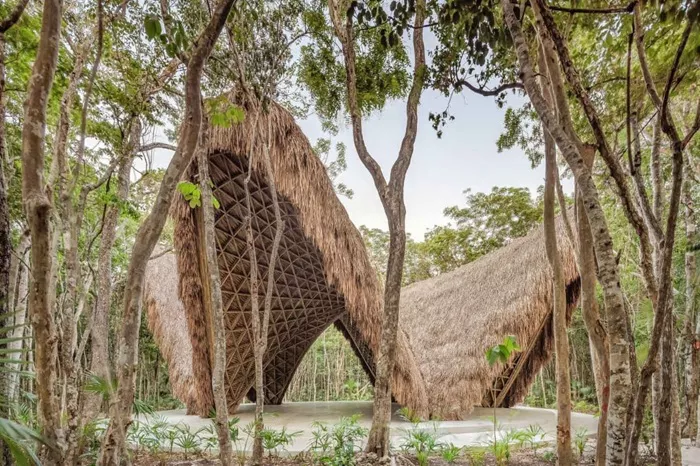The Bamboo Temple is a unique and beautiful Buddhist temple known for its special use of bamboo in construction. It is not just a place of worship but also a symbol of nature and simplicity. Bamboo is a plant that grows quickly and is very strong. This makes it a perfect material for building in many Asian countries.
In Buddhism, temples are important places where people come to pray, meditate, and learn about the teachings of the Buddha. The Bamboo Temple stands out because it connects these spiritual practices with the natural world through its architecture.
The Meaning Behind Bamboo in Buddhism
Bamboo holds deep meaning in Buddhist culture. It is often seen as a symbol of strength, flexibility, and humility. The plant bends in the wind but does not break, teaching us to be adaptable in life’s challenges. This idea matches well with Buddhist teachings about acceptance and resilience.
Many Buddhist monks use bamboo for everyday items like mats, bowls, and even musical instruments. Using bamboo in temples reminds visitors about living simply and harmoniously with nature, which is a key part of Buddhist practice.
Where Are Bamboo Temples Found?
Bamboo temples are mostly found in Asia, especially in countries like Thailand, China, Vietnam, and Japan. These countries have a strong tradition of using bamboo in construction and arts. Each Bamboo Temple has its own style but shares common values of peace, nature, and spirituality.
One famous Bamboo Temple is Wat Pa Ban Tat in Thailand. It is well known for its beautiful bamboo structures and peaceful atmosphere. Visitors often feel calm and inspired when they walk through its halls.
Bamboo Temple Architecture
Why Bamboo is Used in Temple Architecture
Bamboo is chosen in temple architecture because it is eco-friendly and sustainable. It grows fast and can be harvested without harming the environment. Using bamboo helps protect the planet, which is important in Buddhism because of the value placed on all living beings.
Besides being practical, bamboo also creates a warm and natural look. Its color and texture make the temple feel close to the earth. This natural beauty helps visitors focus on meditation and spiritual practice.
Design Elements of Bamboo Temples
Bamboo temples often have open and airy designs. The walls and roofs are made from bamboo poles tied or woven together. This allows fresh air and light to enter, creating a bright and peaceful space.
The structure is usually simple but elegant, with minimal decoration. This simplicity reflects the Buddhist teaching of letting go of excess and finding happiness in less.
Many bamboo temples also include natural water features, such as ponds or small streams, which add to the calming environment.
The Role of Bamboo Temples in Buddhist Practice
Places for Meditation and Learning
Bamboo temples are not only beautiful buildings but also centers for spiritual growth. Monks and laypeople come here to meditate, chant, and study Buddhist teachings. The peaceful setting helps calm the mind and connect with inner peace.
Meditation sessions often take place in bamboo halls where the sound of wind through the bamboo leaves adds to the tranquility.
Community and Festivals
These temples are also gathering places for the community. Special Buddhist festivals and ceremonies are held here, bringing people together in celebration and prayer.
The use of bamboo in decorations and structures during festivals highlights the connection between the temple and nature.
The Spiritual Symbolism of Bamboo Temples
Bamboo temples symbolize harmony between humans and nature. This harmony is a core teaching of Buddhism, which encourages respect for all life. The temple reminds visitors to live simply and mindfully, like bamboo growing naturally in the forest.
Many Buddhists believe that spending time in a bamboo temple helps them feel more grounded and connected to the present moment.
How Bamboo Temples Support Environmental Sustainability
In today’s world, environmental care is very important. Bamboo temples show how traditional buildings can be sustainable. Bamboo’s fast growth means it can be replaced quickly, unlike wood from slow-growing trees.
Building with bamboo reduces the need for concrete or steel, which have a bigger impact on the environment. This aligns with Buddhist values of kindness and non-harm to the Earth.
How to Visit a Bamboo Temple
If you want to experience a Bamboo Temple, here are some tips:
- Respect the customs: Dress modestly and remove your shoes before entering the temple buildings.
- Be quiet and mindful: Speak softly and avoid disturbing meditation or prayer.
- Learn about the teachings: Many temples offer talks or booklets about Buddhism.
- Participate if invited: You can join meditation or chanting sessions to deepen your experience.
Famous Bamboo Temples Around the World
Wat Pa Ban Tat, Thailand
This temple is built mostly from bamboo and wood. It is famous for its serene forest setting and simple lifestyle of the monks. Visitors appreciate the quiet and natural beauty here.
The Bamboo Temple in Japan (Chikurin-in)
In Japan, Chikurin-in is a temple famous for its bamboo garden. The garden creates a perfect place for walking meditation and reflection.
Conclusion
Bamboo temples are more than just buildings. They show how spiritual life and respect for nature can live together. Their simple, natural design helps people find peace and learn Buddhist values.
These temples remind us to be flexible, strong, and humble—just like bamboo. They teach us to protect our planet while deepening our spiritual practice.

